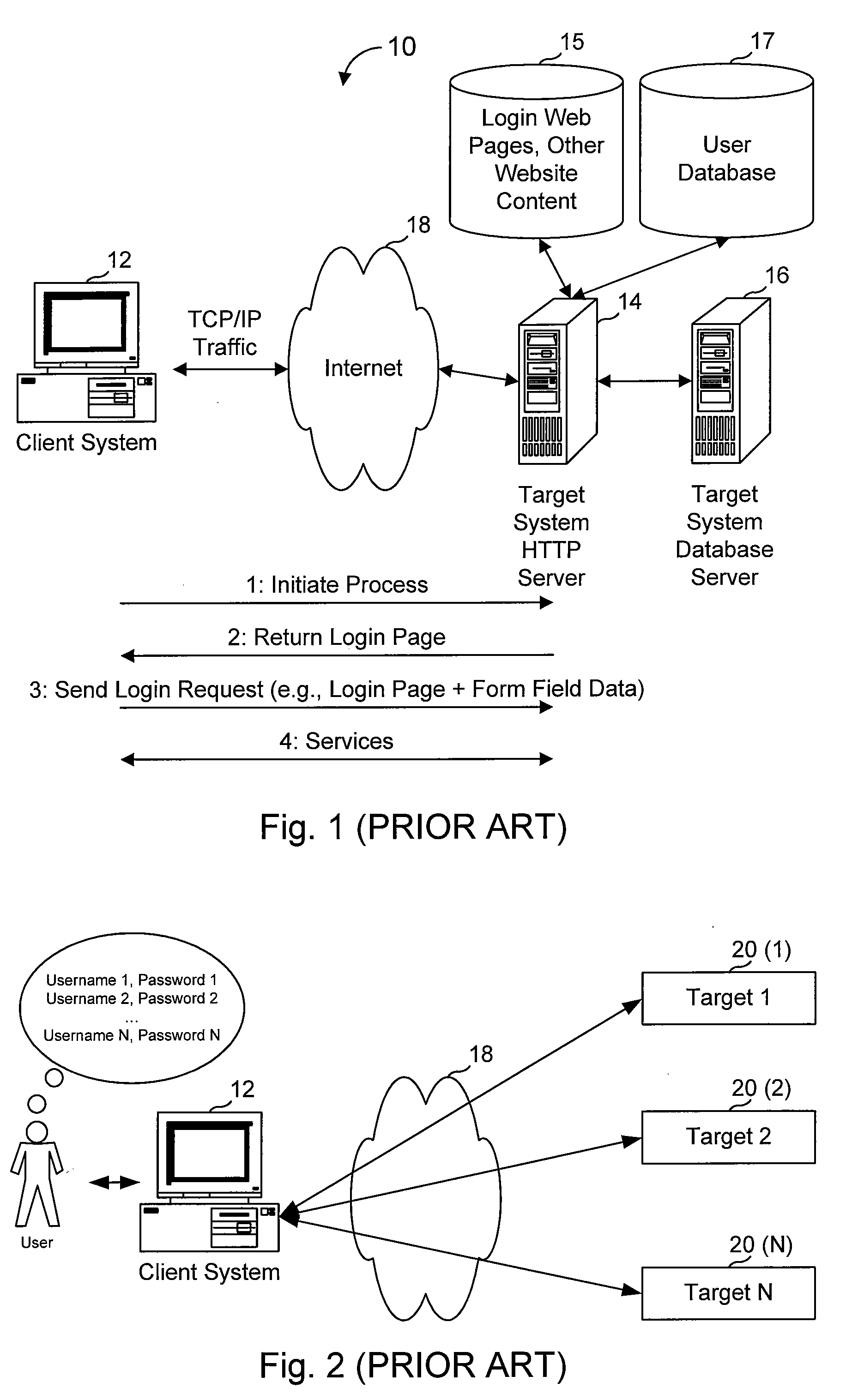User-administered single sign-on with automatic password management for web server authentication
a web server and user-administered technology, applied in the field of network sign-on systems, can solve the problems of poor network security perception, user frustration, and inability to allow clients to access network services
- Summary
- Abstract
- Description
- Claims
- Application Information
AI Technical Summary
Benefits of technology
Problems solved by technology
Method used
Image
Examples
Embodiment Construction
[0046]This disclosure describes embodiments of a sign-on management service and several variations. These embodiments can be implemented in a number of ways, some of which are described herein in detail and others that should be apparent to one or ordinary skill in the part upon reading this disclosure. Generally, a sign-on management service is provided to a user to manage authentication processes that the user uses to authenticate to targeted services. For example, the user might use the sign-on management service to manage details usable for accessing the user's targeted bank Web site. Some of these embodiments of a sign-on management Web site can be used by a user to manage authentication for all of the user's targeted Web sites that require authentication, as well as providing automatic password management and can do so without the user knowing their passwords used for the individual targeted Web sites. As used herein, “Web site” generally refers to a server / service that is pre...
PUM
 Login to View More
Login to View More Abstract
Description
Claims
Application Information
 Login to View More
Login to View More - R&D
- Intellectual Property
- Life Sciences
- Materials
- Tech Scout
- Unparalleled Data Quality
- Higher Quality Content
- 60% Fewer Hallucinations
Browse by: Latest US Patents, China's latest patents, Technical Efficacy Thesaurus, Application Domain, Technology Topic, Popular Technical Reports.
© 2025 PatSnap. All rights reserved.Legal|Privacy policy|Modern Slavery Act Transparency Statement|Sitemap|About US| Contact US: help@patsnap.com



